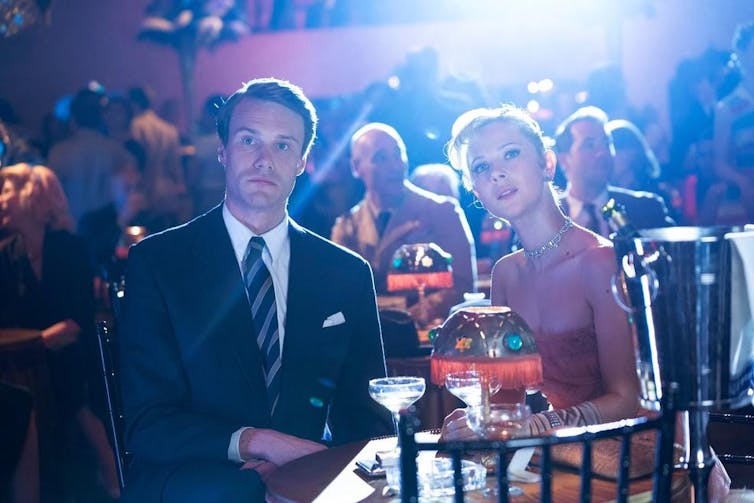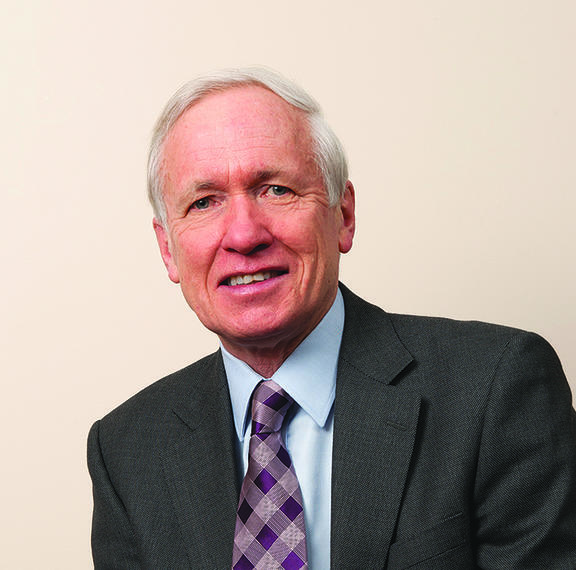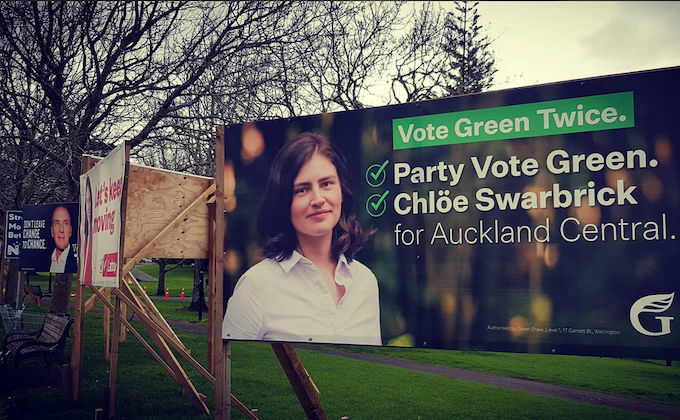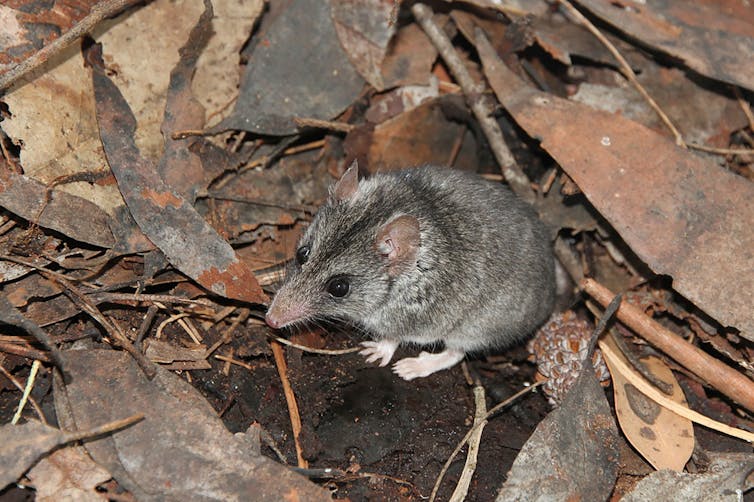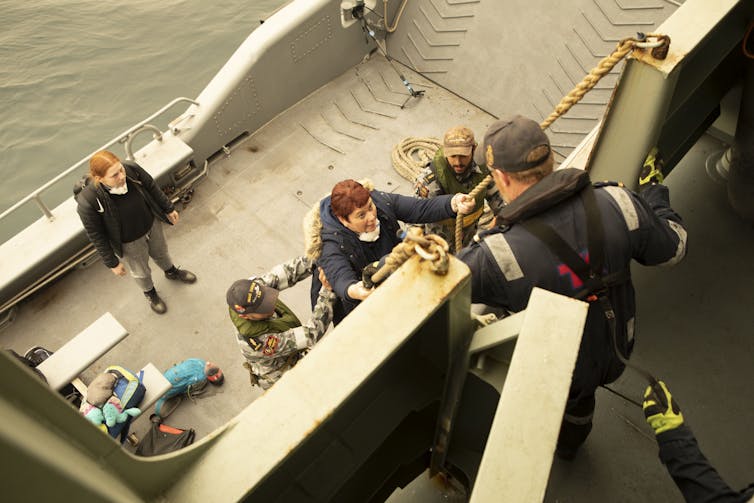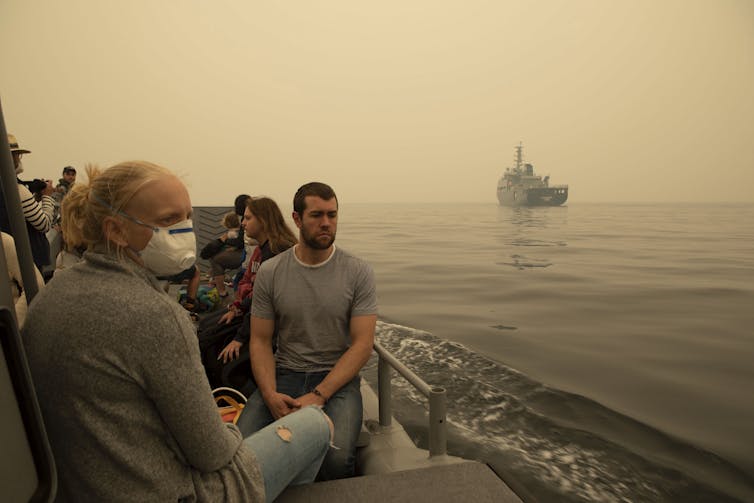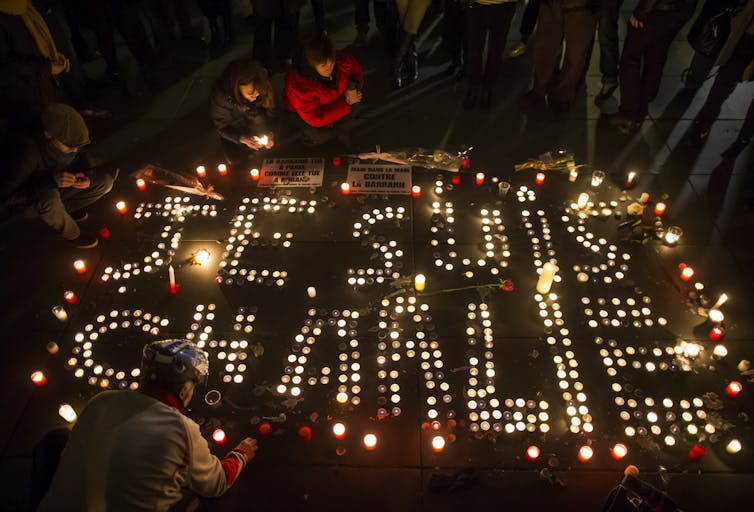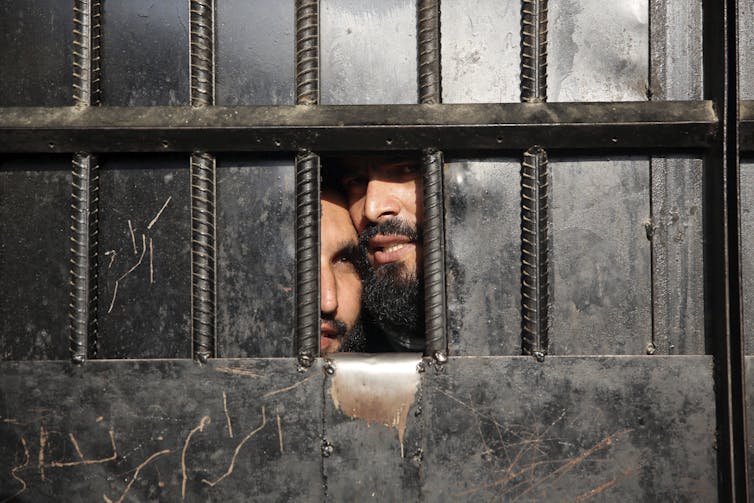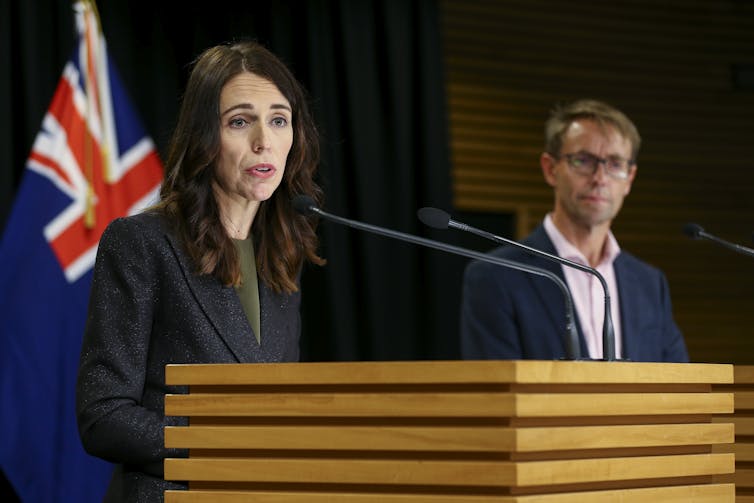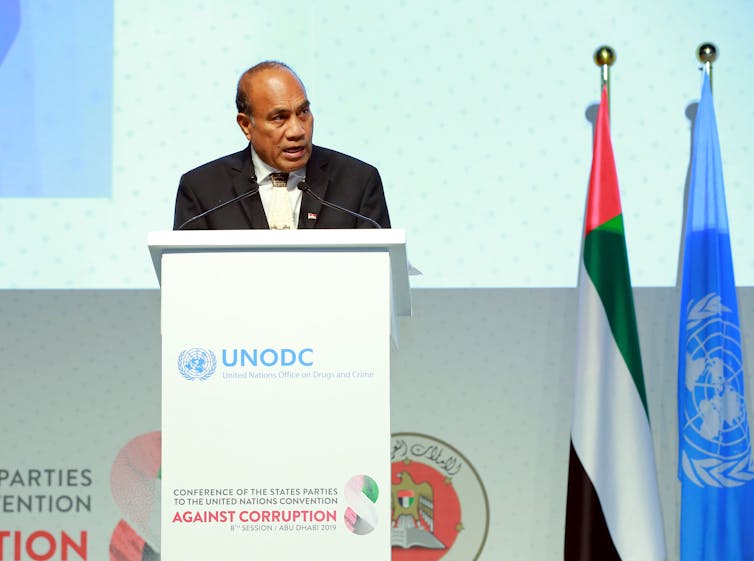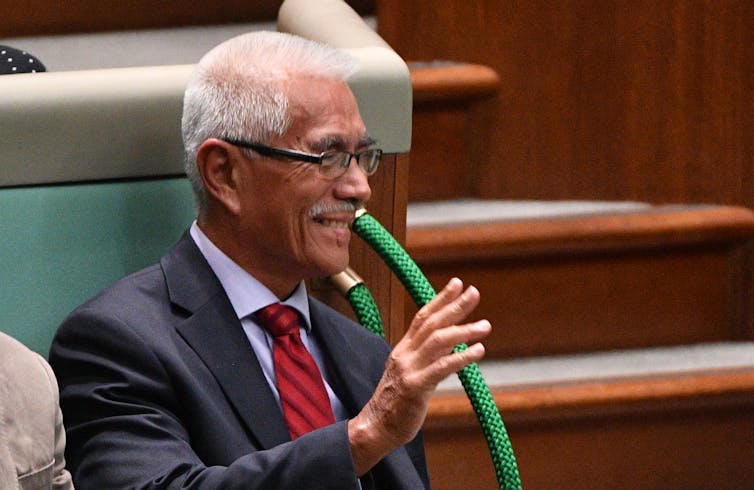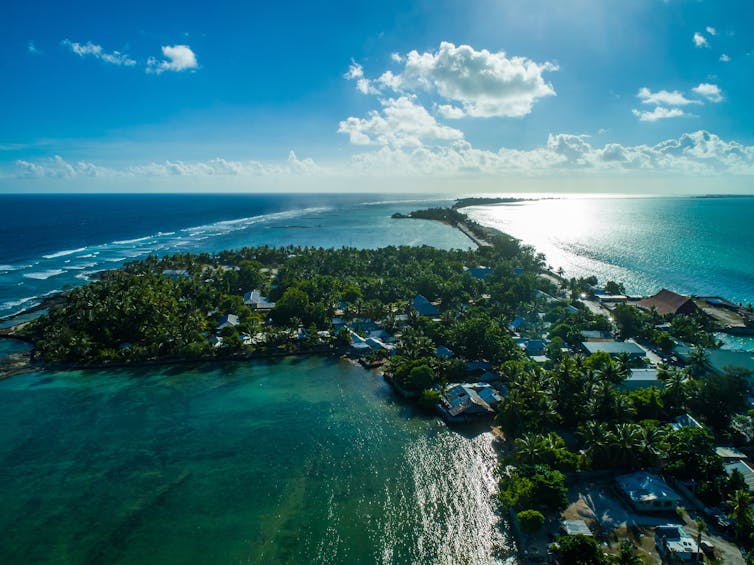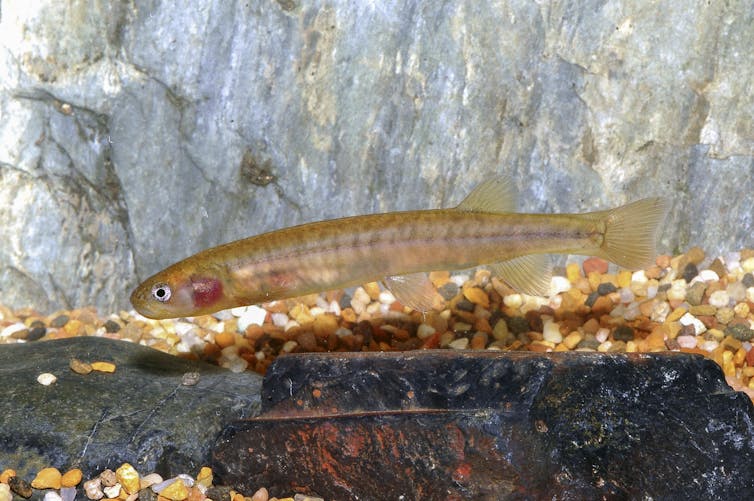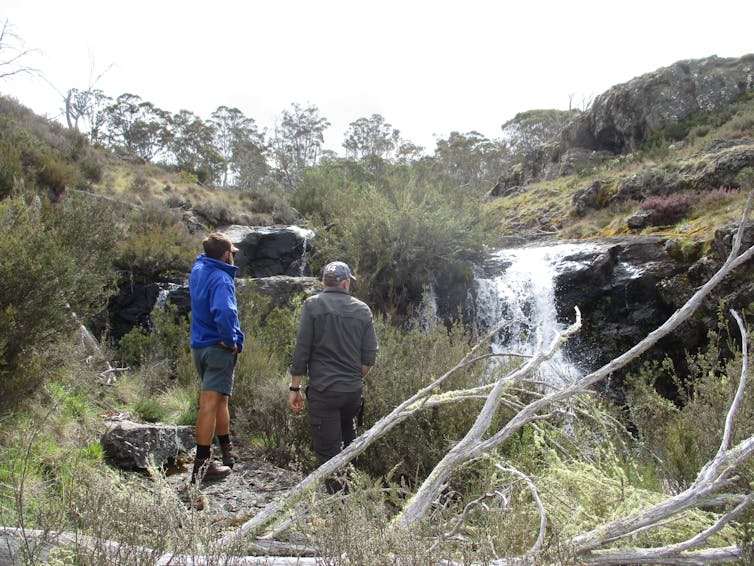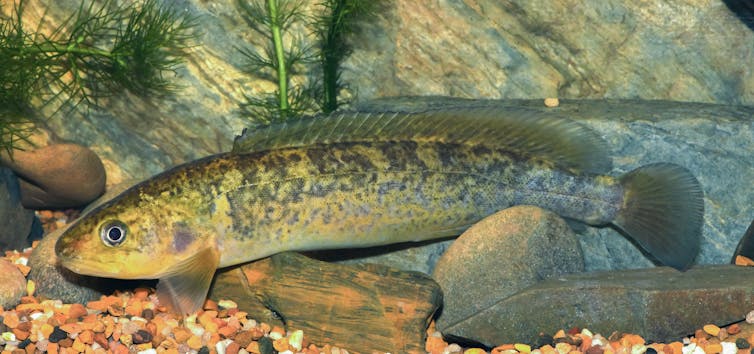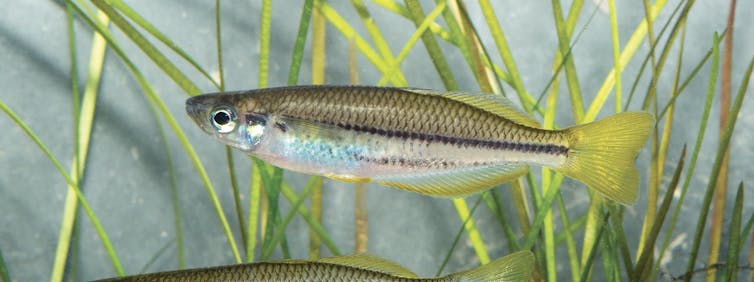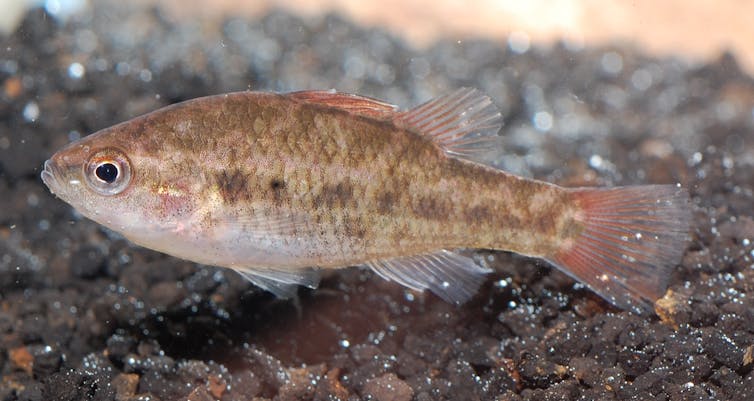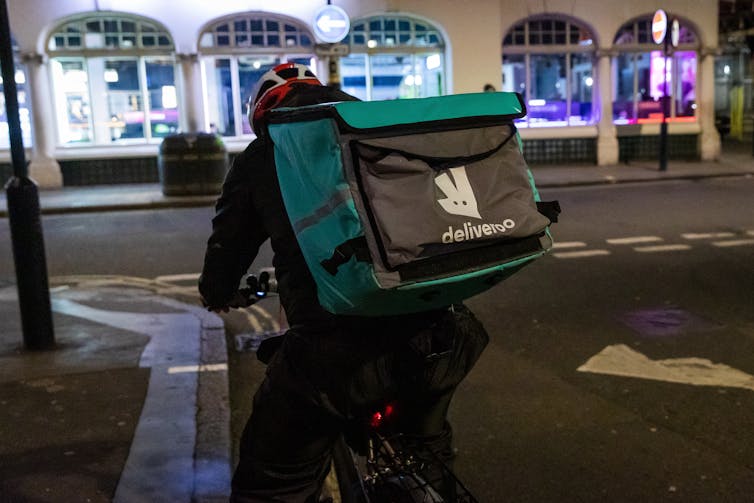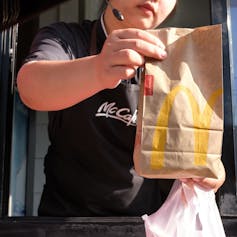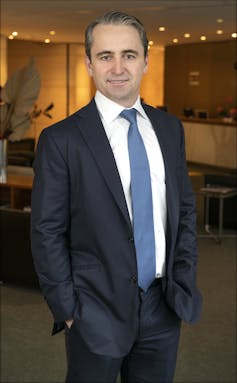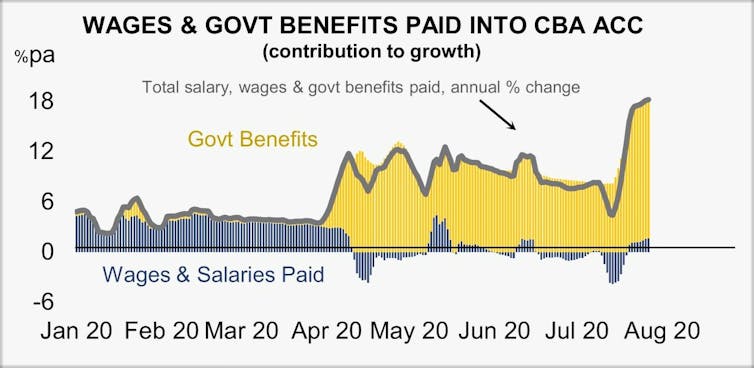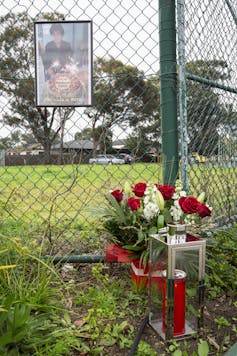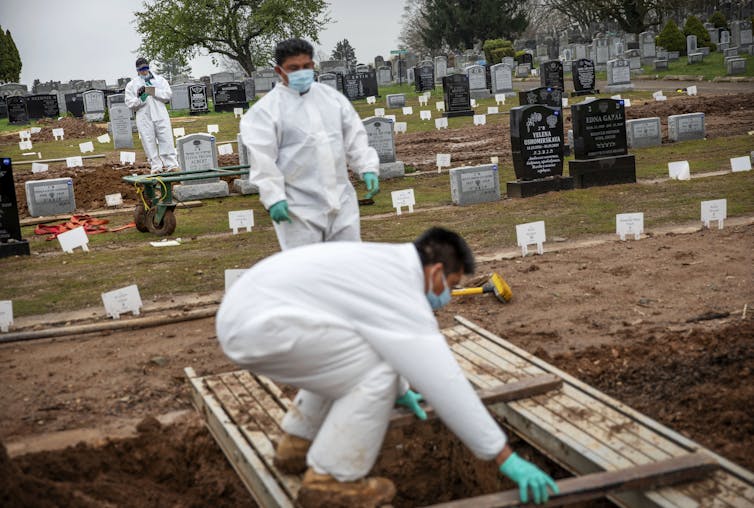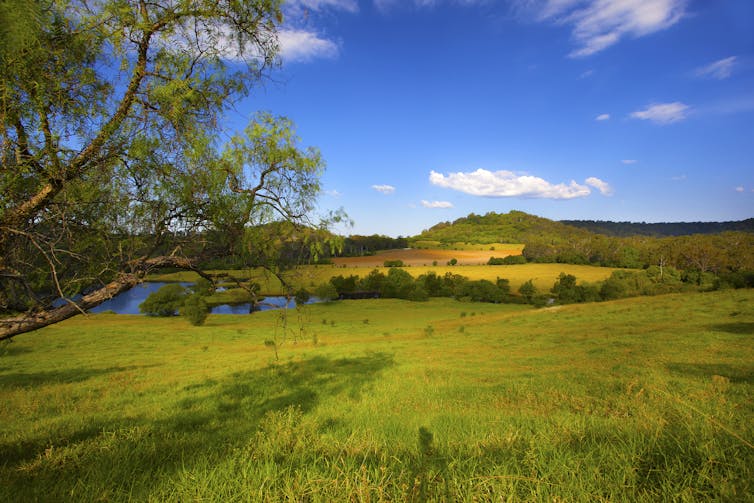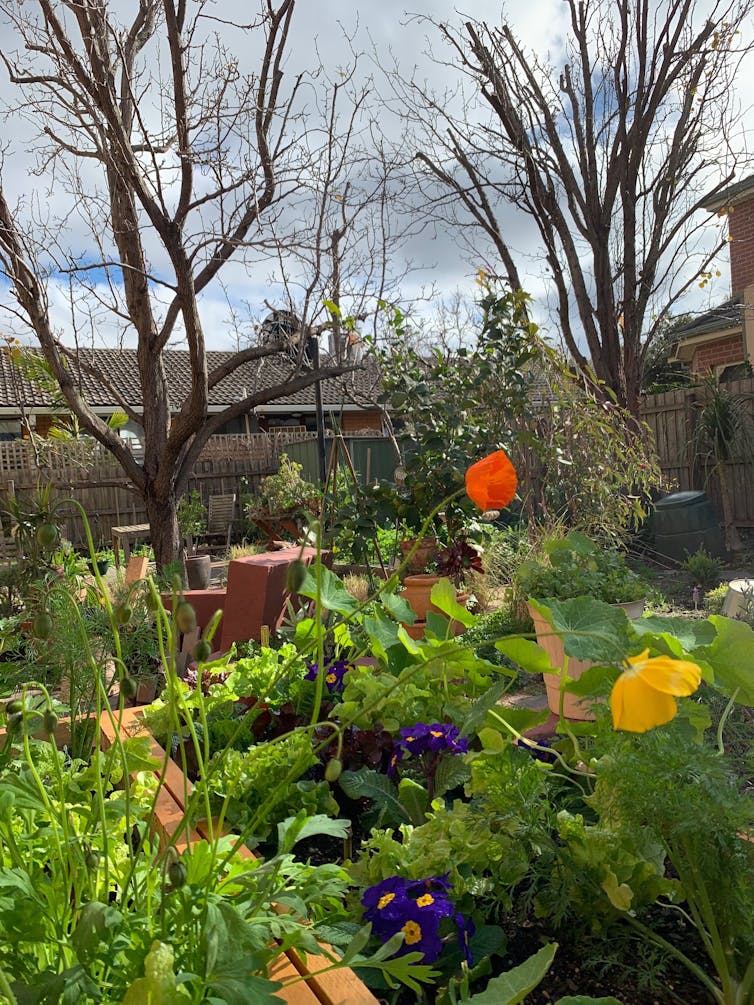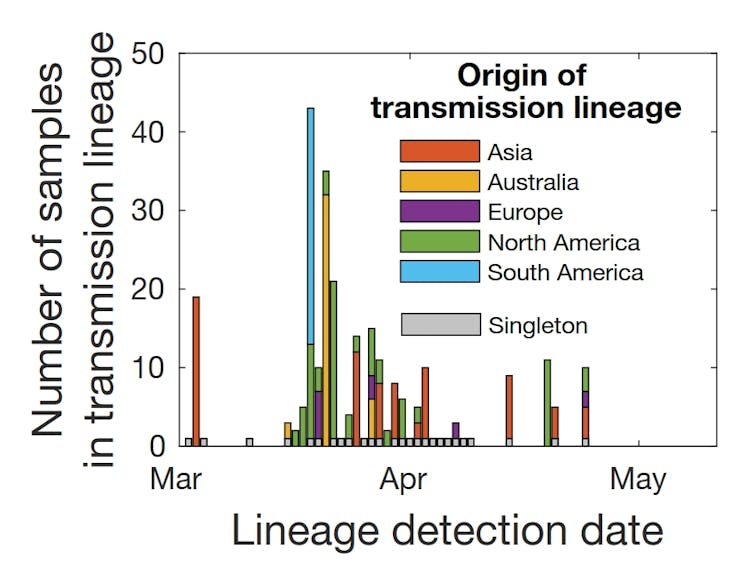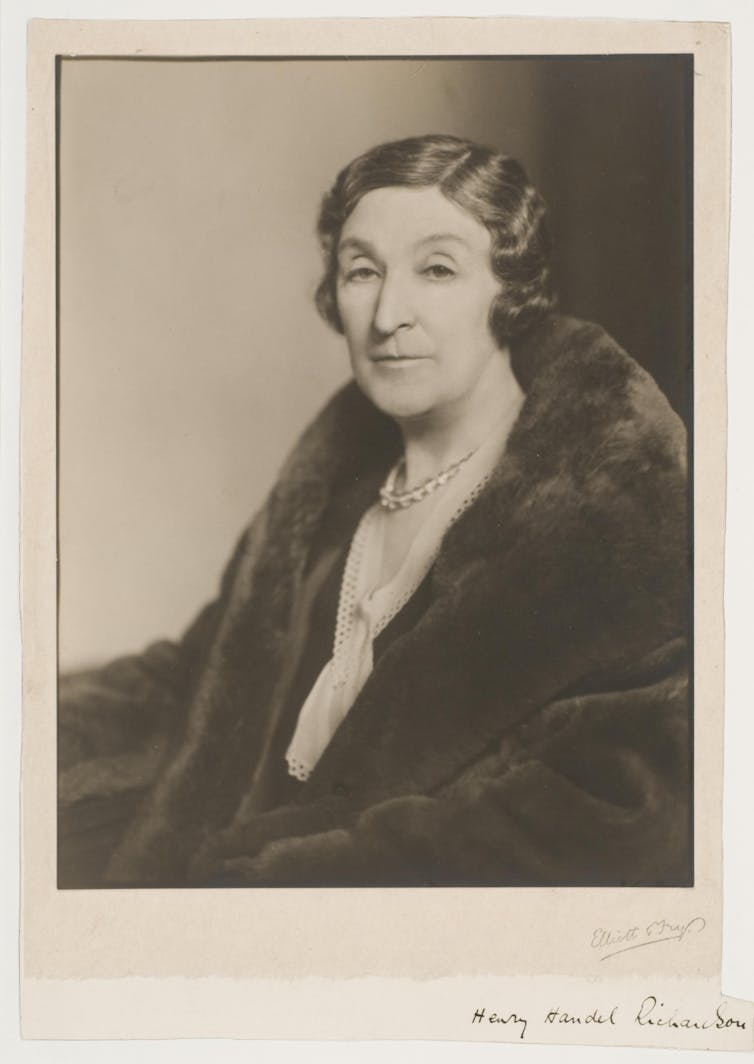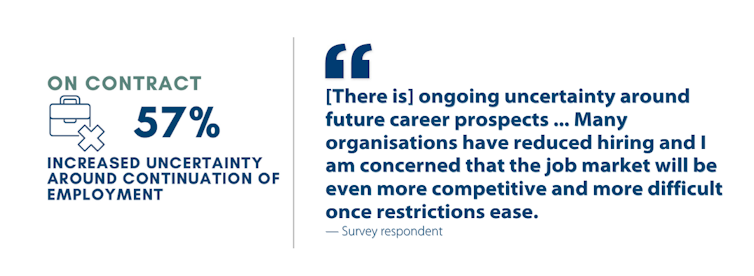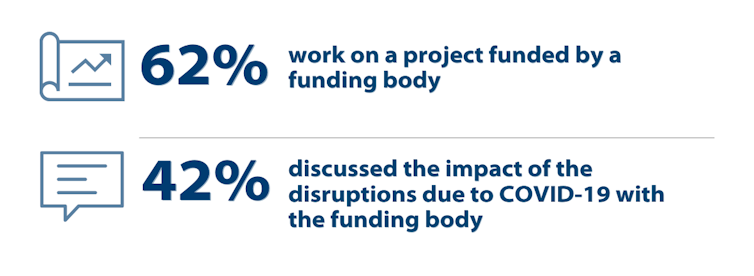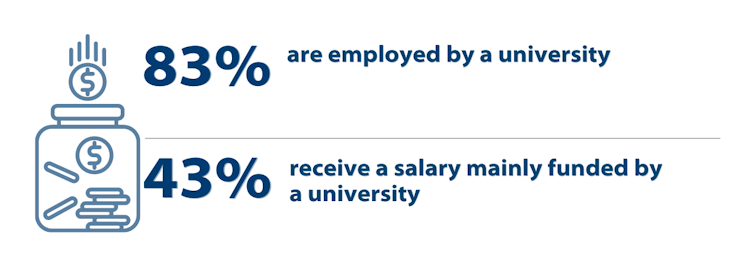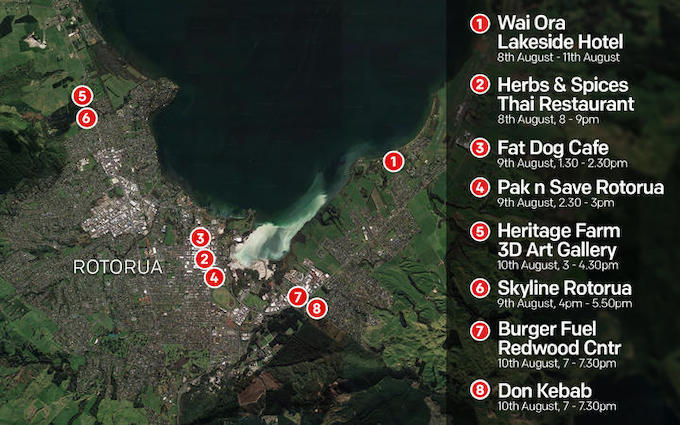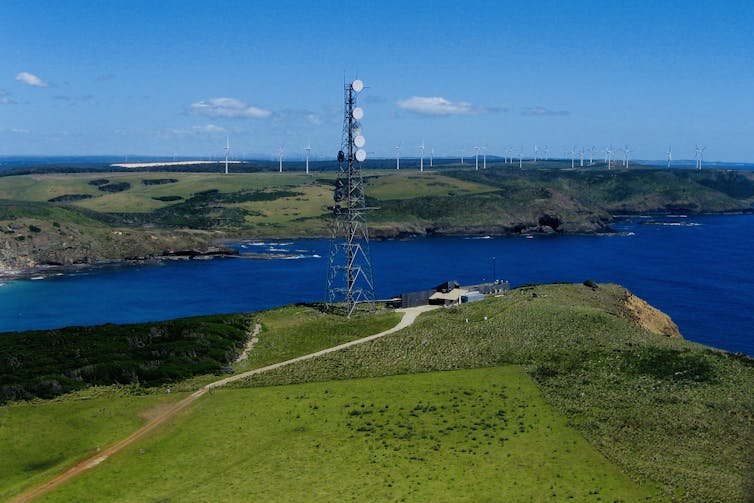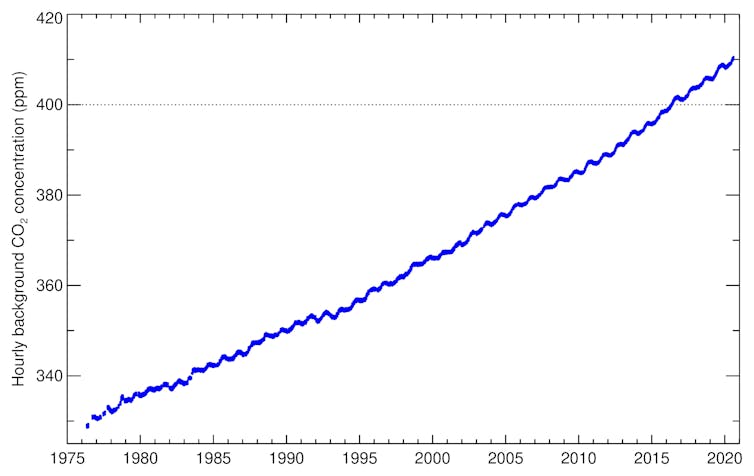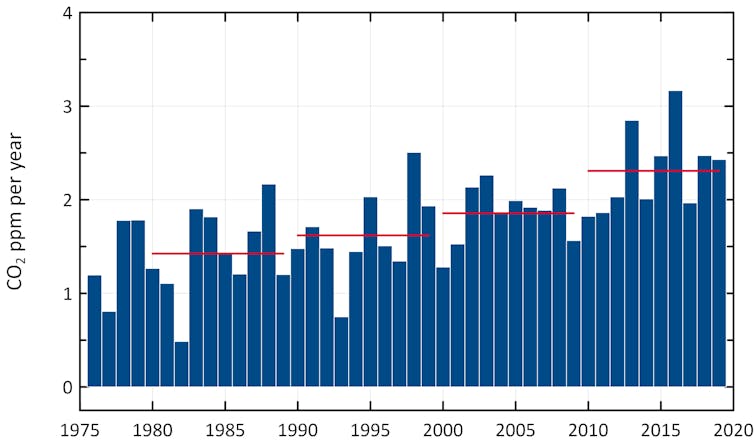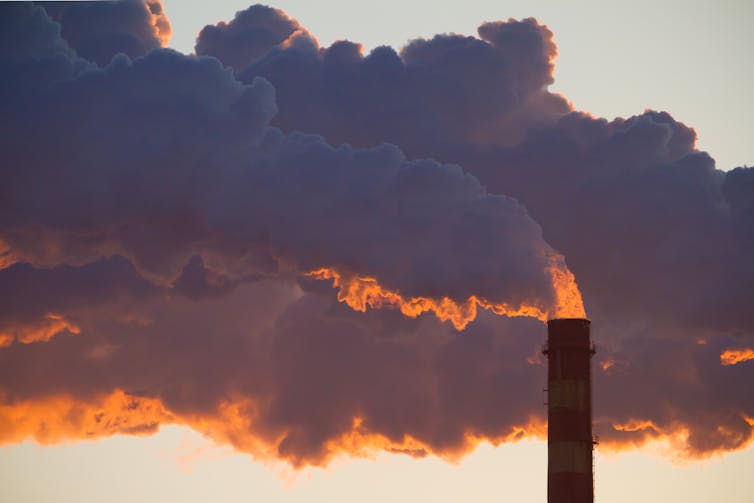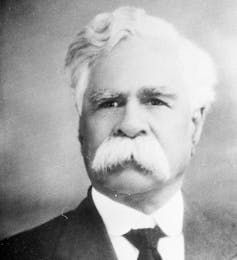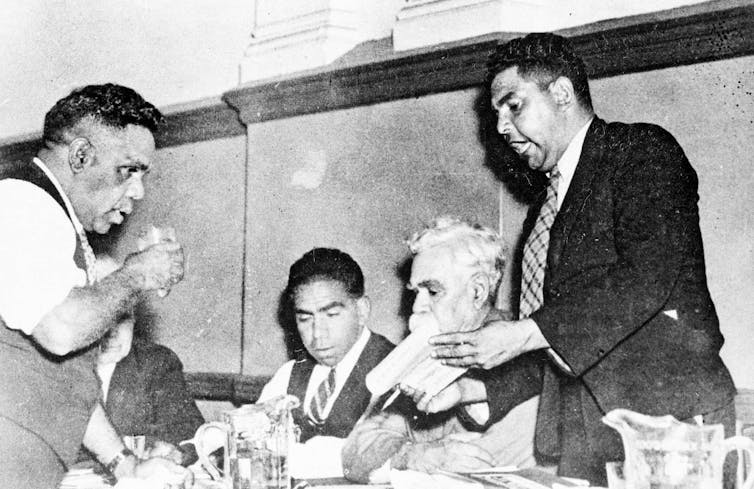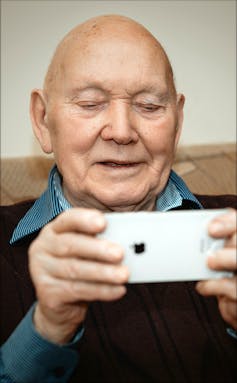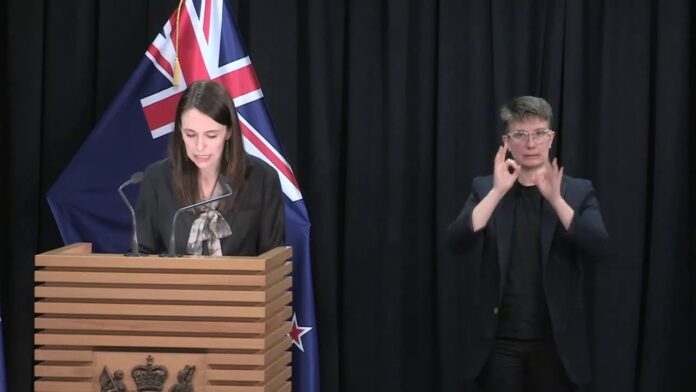Source: The Conversation (Au and NZ) – By Michelle Grattan, Professorial Fellow, University of Canberra
The second wave of the pandemic in Victoria has pushed the post-COVID economic recovery further beyond the horizon. Among the challenges for the federal opposition are dealing itself into the debate and formulating alternative economic policies before the next election.
With speculation the budget may bring forward the next tranche of the legislated tax cuts, Labor is leaving the way open to give its support.
“We’ve said for some time that that’s something that the Government should consider. We’d have an open mind to that if they came to us with a proposal. They don’t yet have a specific proposal. We’ve had some smoke signals about it for some time now…” Jim Chalmers, Shadow Treasurer, tells The Conversation.
“If they came to us and said that they wanted to bring forward stage two of the legislated tax cuts, then we’d engage with them in a pretty constructive way. We’ve said that for some time.”
A high danger is Australia may come out the COVID recession as a more unequal society. Charmers says: “My big fear is that it will accelerate some of those trends that we were already worried about; inequality, but also social immobility.
“We are worried about a lost generation of workers, a discarded generation of people, who become disconnected from work and from society during this recession, who find it very hard to make their way back.
“When people ask what keeps us awake at night, really it’s the idea that this spike in unemployment turns into long-term unemployment, which becomes long-term disadvantage, which cascades through the generations and concentrates in areas like the one that I represent. That’s our big fear.”
At the moment, Chalmers is working in Brisbane, assisting with the campaigning for the October Queensland election, which he believes will be “extraordinarily tight”
“There’ll be different sub-elections around the place. Townsville will be a challenge for us. There’s some opportunities for us on the Gold Coast. It’ll be a real mixed bag. The big thing that we need to avoid is one of those minority governments. In this recession and into the recovery, we want to have a stable government like the one that Annastacia Palaszczuk is providing.”
TRANSCRIPT (edited for clarity)
MICHELLE GRATTAN: Jim Chalmers, we’re in an incredibly difficult and volatile time. How do you see the economy looking a year on?
JIM CHALMERS: I think you’re right, Michelle, that this is a really difficult time. Even just this week we heard that wages growth is the slowest it’s been for the 20-something years that we’ve kept these kind of statistics. We took another massive hit to consumer confidence, now back down to the levels it was at in April when people were extremely anxious. It is a very difficult time. Where we get to in a year’s time is pretty heavily reliant on a couple of uncertainties; when and whether we find a vaccine, and when and whether there are other outbreaks like we’ve seen in Victoria. But one thing I think is almost-certain, if not certain, is that the labour market will still be really weak in a year’s time. The Reserve Bank, the Government, and the private economists all think that we will have unacceptably high unemployment for longer, that we’ll have weakness in the labour market, and I think that that should be our biggest concern and our key focus.
MG: Now we’ve seen the Opposition being increasingly critical in various aspects of Government policy. Taking an overview however, do you think enough is being spent by the Federal Government or should there be more? And if you think it should be more, how much more?
JC: First of all on our criticism, as you describe it, of what the Government’s done, our overwhelming preference is for the Government to succeed. That’s the difference between our approach this time around and what the Liberals and Nationals did during the Global Financial Crisis. We want the Government to succeed. Our preference is that they get everything exactly right. But I think our responsibility is to point out where there’s been issues with the speed at which they’ve moved, or the coverage of JobKeeper, or what’s happening with the super early access, or what’s happening in aged care, or not having a comprehensive national scheme for paid pandemic leave. I think it’s our responsibility to point out where the Government could be doing better. I think it’s a matter of recognising that all of this money is borrowed money. We judge its effectiveness by what it means for jobs. We need to get maximum bang for buck. Our responsibility is to point out where that isn’t happening, and to try and get the Government to be as successful as possible in managing this recession.
MG: And what about the quantum? Is it enough?
JC: It remains to be seen Michelle. Certainly most people, including the Reserve Bank and others, have wound back their expectations for what’s happening in the economy. Only three weeks ago the Government said something like an additional 240,000 Australians will lose their jobs between now and Christmas. By last week that’d become almost 400,000. The expectation is that the economy is deteriorating. We’ve said all along that we need to be responsive to that. The Government’s policies need to be tailored to developments in the economy. If the economy is going to get much worse, then I think it’s highly likely the Government will need to do more. It doesn’t necessarily only have to be cash payments. There are other ways the Government should be supporting the economy and we think, for example, that a comprehensive jobs plan would be really important at this stage.
MG: Well, what would be the shape of that?
JC: We’ve put some ideas on the table. Think about this crisis in three stages. The first stage is responding to the immediate crisis, the triage part of things. That means JobKeeper, JobSeeker, and getting those right. The next phase is bolstering the recovery. We’ve said that the Government should be contemplating things like building more social and public housing because it’s labour intensive, and has a lasting benefit for the most vulnerable people in our society. Beyond that, in terms of creating new jobs and getting investment and employment going again, we’ve offered to work with the Government to settle energy policy so that businesses can invest with confidence again.
MG: In terms of the direct creation of jobs though, some of these alternatives you’re putting forward, or additions, are not going to be appropriate for people who’ve been thrown out of work in the service sector, are they?
JC: That’s a really important consideration, Michelle, because we need to be doing what we can to create jobs for people who’ve been displaced, as well as doing what we can to keep people in work. The caring economy needs to be a really important part of that consideration. We’re very concerned that in childcare, for example, that many workers were taken off JobKeeper too early given what we saw unfold in Victoria. That needs to be a key part of our considerations and a key part of the Government’s considerations. Those caring economy workers in aged care, disability care and child care are really important.
MG: Just in labour market terms, we’re hearing a lot in aged care at the moment about the fact that workers are not well trained, they’re not well paid, they have to take a number of casual jobs. How do you think a better workforce could be put together for that industry in the near-term, in say the next couple of years?
JC: I think we’ve known for some time now that there are issues in aged care. That’s why there’s a royal commission. That royal commission which hands down its final report early next year has made some interim recommendations about some of those issues that you identified, but others as well including physical and chemical restraints, getting younger people out of aged care, and also making sure that we do something about those homecare waiting lists. But the workforce issues in particular have been around for some time. My colleague Julie Collins and my other colleague Ged Kearney have been talking about this for some time. The issues have been obvious, but this crisis has really shone a light on them. We’ve not announced or proposed a specific policy yet here, but we are working our way through those issues like the Government is and we’ll do the right and responsible thing when the Government comes to the table with a plan.
MG: It’s a sort of microcosm, it’s a problem that can arise in various industries, isn’t it? Casualisation, people taking part-time jobs, training; all of those things can come together?
JC: Yeah. One of the key things we’ve learned from this crisis is really just how precarious people’s work lives are, just how insecure work is, how much underemployment there is, and how much we rely on basic things like sick leave. It’s really shone a light on those things. Some of us didn’t need reminding, but others did, that all of these things that have developed in the workforce over some time are costly, not just in crisis terms, but for so many people who were already living on the edge even before the virus turned up.
MG: Now obviously debt has become a second, third or fourth order issue in the current circumstances, but some economists would argue that it doesn’t really matter at all. Do you think there’s a limit to how much debt a country can comfortably live with in this situation?
JC: I think debt does matter, but in times like this it’s not the most important priority. The most important priority is supporting people and their jobs in particular. We’ve been consistent on that all the way from the Global Financial Crisis and again now. We recognise that when times are as grim as they are now, we’re in the first recession in three decades and the worst downturn since the Great Depression, that government needs to step in and do what it can. It needs to be responsible about that. It needs to be looking for maximum bang for buck. Spending needs to be effective. We measure that effectiveness by what it means for jobs. At some point the debt will have to be repaid so it does matter to that extent. There are costs in servicing debt. We’re heading towards one trillion dollars in gross debt, which is really quite stupendous in historical terms so it does matter, but the highest priority is jobs.
MG: At what point, what amount, or percentage of GDP would you become really concerned that we shouldn’t be exceeding?
JC: It’s already concerning. It’s $850 billion in the most recent update and heading towards a trillion. When it was at $100 billion and $200 billion the Government described it as a debt and deficit disaster. It’s now at some multiples of that. It’s concerning. It costs taxpayer money to service the debt. It will need to be repaid over time. We don’t want the most vulnerable people to repay that. In terms of nominating a percentage of GDP, I think the most important thing is that the Government steps in when things are dire like they are now, and does what’s right and responsible in terms of people’s jobs in particular. I agree with the point made really well by Deloitte Access Economics, which is that if you want to fix the budget, you have to fix the economy. That’s our priority.
MG: You mentioned vulnerable people. Labor, particularly before the last election, made inequality a big issue. Do you think that this crisis will leave us as a more unequal society?
JC: That’s certainly the fear that I have, Michelle. You hear a lot of people saying that the virus doesn’t discriminate, and in health terms anybody’s capable of catching it so it’s true to that extent. But in terms of the effects of this recession, I think it does discriminate. My big fear is that it will accelerate some of those trends that we were already worried about; inequality, but also social immobility. We are worried about a lost generation of workers, a discarded generation of people, who become disconnected from work and from society during this recession, who find it very hard to make their way back. When people ask what keeps us awake at night, really it’s the idea that this spike in unemployment turns into long-term unemployment, which becomes long-term disadvantage, which cascades through the generations and concentrates in areas like the one that I represent. That’s our big fear. That’s why we have to do whatever we responsibly can to step in and to do the right thing by people and their jobs now.
MG: Of course, one thing is the encouragement of business investment. The lack of business investment’s become a huge problem. The Government’s looking at an investment allowance. Labor took a version of this to the election. How effective is such an incentive when many businesses will just have no confidence about where things will be in a few months or a few years, and they don’t want to take any risks, even if they are given incentives?
JC: A couple of things about that, Michelle. You’re spot on to say that business investment is a problem. It’s been a problem for some years. Even last year, 2019, we had some very worrying trends in business investment. Some businesses are recovering. Some will recover faster than others. There will be an appetite in some parts of the economy for investment if we can get the incentives right. I think it’s important that we recognise that. The other really important point is this tax incentive. If the Government comes forward with something like what we proposed at the election, or some other version like what the BCA is proposing then we’ll have a look at that. We haven’t seen the details of that yet. But it shouldn’t be the only thing that the Government’s doing when it comes to incentivising business investment.
I spend a lot of time in the boardrooms of this country, Michelle. In almost every meeting I have, in one way or another, energy policy uncertainty comes up. A key reason why businesses haven’t been investing is because there’s been 19 different energy policies in the last seven years from the Government. People don’t know what the rules of the road are going to be, and they need that certainty. That’s why Anthony Albanese wrote to Scott Morrison to suggest that both of the big parties in the parliament work together to give business that certainty so they can get that cleaner and cheaper energy, lower their business costs, and get investing again. Investment equals jobs and it’s jobs that we need.
MG: There’s been a lot of talk recently about a push in favour of gas. What’s your view on that?
JC: Gas has a role to play, absolutely. It’s an important part of the energy mix. There’s a lot of investment that’s gone into gas around the country in recent years. For the foreseeable future we’ll have a mix of different energy sources. One of the things that we need to be able to do and that I’m convinced we can do is have cleaner and cheaper energy, including new sources of energy, without abandoning some of those traditional strengths that we’ve had and which have done so much during this recession to help underpin what economic activity there is.
MG: The superannuation debate is going to heat up soon. The Government has a report that’s been done into that. All the signs are that the Government would like to reverse or change the current law that will increase compulsory super from next year. Labor is very against any change. Firstly, would you guarantee that it would vote against such a change? And secondly, don’t those who say that compulsory super shouldn’t increase, have a case? Especially view of figures like those – we were talking about wages?
JC: We don’t support the freezing of the Superannuation Guarantee. We don’t support the unwinding of those gradual, legislated increases. There’s not a piece of legislation before us and typically we’d confirm our view on how we’d respond to that through the usual processes and in the usual ways that you’d be familiar with, but we certainly don’t support another freeze. One of the arguments as you rightly identify that the Government has been putting about even before this crisis is about wages. I mean, give me a break! Wages growth has been stagnant in this country for some time. Wages growth was especially stagnant after the last couple of times that the Government froze the Superannuation Guarantee. I don’t think that that argument holds much water. I’m really worried that there’s been an agenda here from our political opponents to undermine and diminished super, and that they’re using this Coronavirus crisis as an excuse to do that. They got that Retirement Income Review report some days ago now, a couple of weeks ago now. They still haven’t released it and I think that’s very troubling. We don’t want it to be a stalking horse for more attacks on super or more attacks on the pension. They should release the report and then we can engage with it.
MG: It’s not just the Government though, is it? The Grattan Institute, for example, is critical of the way that the super scheme is going?
JC: First of all, I have a lot of respect and regard for the Grattan Institute. But those particular conclusions come from some, in my view, unusual assumptions which led to them arriving at what they concluded in those reports. I’m not critical of them as an organisation, but we’re entitled to disagree with their conclusions. My view is that you don’t boost retirement incomes by winding back super. We don’t want “compulsory” taken out of compulsory superannuation. There are people in the Liberal Party, the National Party and elsewhere who want superannuation to be voluntary. They want the SG frozen. They want some of the other arrangements relaxed. We’re not in the cart for that. We’ve made that very clear and I can’t see that position changing.
MG: The Government has floated the idea of bringing forward the next stage of the legislated tax cuts. What would be Labor’s attitude if that happened in the budget?
JC: We’ve said for some time that that’s something that the Government should consider. We’d have an open mind to that if they came to us with a proposal. They don’t yet have a specific proposal. We’ve had some smoke signals about it for some time now. We do think that middle Australia needs cost of living support during this recession. It shouldn’t be the only thing that they contemplate. We need a more comprehensive plan, particularly for jobs. But if they came to us and said that they wanted to bring forward stage two of the legislated tax cuts, then we’d engage with them in a pretty constructive way. We’ve said that for some time.
MG: Now can I turn to the question of border closures? Obviously, it’s clear that borders need to be closed to Victorians at this point, but do you support closures when there are less reasons for them? For example, particularly, do you support WA maintaining its hard border? And how long do you think that we can live as a balkanized country?
JC: Obviously, it’s difficult to gauge that last part of your question, Michelle, but I think on the main, people have been pretty supportive of these border closures. What we’ve seen in Victoria really reminds us that whether it’s Mark McGowan, Annastacia Palaszczuk or others, they’ve been right to be cautious, careful, and conservative about returning to normal. In my home state of Queensland, if Annastacia Palaszczuk had listened to Josh Frydenberg and Scott Morrison and reopened the borders early, then that may have had catastrophic consequences for lives and jobs here in Queensland. I’m sure Mark McGowan feels the same way about those border closures that Clive Palmer has been trying to knock over in the west. Nobody pretends that having state borders closed is a good long-term thing but I think it’s proven necessary. For Premiers and Chief Ministers of either political persuasion, we’ve tried in the Opposition to be supportive of them when they take those decisions which are difficult and have consequences. When they take those decisions based on a careful consideration of the best available medical advice, then we try and back them in.
MG: A big part of your job is not just responding to day-to-day things but formulating policy that Labor will take to the election in the economic area. I wonder, how difficult is it in these circumstances to do that ahead of time? For example, before the 2016 and 2019 elections, Labor had policy out there way ahead of time. Do we now have to see policy formulated in a just-in-time approach?
JC: We’ll roll out policies in advance of the election. But one of the things that we have to recognise is that it’s harder than ever to assess what kind of situation we would inherit if we were to win government at the next opportunity. We don’t really know what condition the budget would be in or the economy, though we can work on the basis that unemployment will be a key focus of Labor’s policies. I think it is more difficult. We made a deliberate decision after the last election to take the time to get our policies right. That is harder in the current climate. We are focused in the near-term on dealing with this recession, recovering from it strongly, making sure that we can find new opportunities and new jobs for people. We don’t know when the election will be, or what the budget or the economy will look like then. To be frank with you, Michelle, that does make things more difficult.
MG: Labor has usually got big spending programs for health and education in particular. Will they have to take a backseat at this next election in terms of the money that you pledge for them?
JC: Health and education will always be key priorities for us. In terms of the size and nature of commitments that we might make there then that obviously remains to be seen. There’s more work to be done in those really important areas. There’s never been a time where public health has been more important than it is now. Making sure people are skilled up to take advantage of opportunities as they emerge in the recovery, that’s obviously key as well. They’re important policy areas. We need to recognise we can’t undo all of the damage overnight that’s been done over seven years of cuts in lots of these areas. They’ll be a priority. We’ll be responsible about it. We’ll have a discussion about it. We’ll announce our policies in due course.
MG: Scott Morrison has said that the National Cabinet, which has been working pretty effectively during the pandemic, has replaced the Council of Australian Governments, which of course operated under both Labor and Coalition governments. Would you expect a Labor Government to keep that structure of the National Cabinet and its attendant bodies?
JC: We’ll work our way through that, Michelle. I’m a long-term believer in the capacity of what used to be COAG as a forum for reform, especially economic reform. I think it has been diminished in recent years and during this crisis it has redeemed itself in the form of the National Cabinet. I think there have been good developments at the National Cabinet from leaders of both sides of politics and from right around Australia. That’s a good thing. We’ll learn from that. We’ll take the best of what we inherit and see if any other improvements could be made. Whether it’s called the National Cabinet, whether people meet via video, on the phone, or in person, those are some considerations. What really matters is what state, federal and local governments can do to work together to try and recover from this recession. I would be certain that under an Albanese Labor Government, that COAG or National Cabinet, whatever it’s called, will play a really important role. The parallel I’ll draw here is with the G20 meetings, which were so good at dealing with the Global Financial Crisis 10 years ago, and then lost their way a little bit in more normal times. We need to make sure that National Cabinet or COAG is as effective in normal times as it is in crisis times.
MG: Which of course is, by definition, difficult, isn’t it? Because crisis brings governments together.
JC: Yeah. As I said, it has performed relatively well. There have been some things that we would quibble with, and there have been outbreaks of disagreement from time-to-time, but overall it has worked relatively well. The real test will be how it works in 18 months’ time or three years’ time, and as the recovery gathers pace whether there’s still an appetite for cooperation, collaboration and reform.
MG: Do you think in general, the pandemic has shown that the Federation needs a major shake-up or has it shown that it can work effectively together when it has to?
JC: There have there been a lot of instances where two levels of government have worked together effectively, and we should acknowledge that. But at the same time, we’ve seen some of the finger-pointing which is not ideal. For example, aged care is a federal responsibility. From the Prime Minister down, the Government shouldn’t be trying to evade their responsibility for aged care. It’s been one of the most problematic areas. From time-to-time we have had federal ministers try and pretend that this is a Victorian State Government problem. It’s not. There are issues of accountability. Ideally, if you started to draw up the Federation from a blank sheet of paper, you wouldn’t have as many of the blurred lines of accountability, but aged care is very clear. We need to make sure that people are accountable and responsible for the areas that are in their remit.
MG: Now, you’re a Queenslander. There’s an election coming up in October. What have you been doing on the ground there to help your state colleagues? How’s it going? Is it an election all about the pandemic, or are there a whole lot of issues that we’re not hearing about down south?
JC: I think it’s primarily about the pandemic. One of the reasons why that has dominated the discussion is because there are very different views from the Premier and the Opposition Leader about things like border closures. Annastacia Palaszczuk has been resolute and she’s been right. That’s saved jobs and save lives here, frankly. That will be a key issue in the campaign, but there are other issues too. How we get the Queensland economy diverse enough and broad enough to be creating jobs and opportunities in the recovery will be a really important part of it as well. I’ve been spending a heap of time in regional Queensland with some of our state candidates. I just got back from a long road trip through out west, Central Queensland and the Fraser coast. Next week I’m off to Western Queensland and the Southern Downs, spending time with our candidates. One of the consequences of it being a bit more difficult to move around the country is it has given us the opportunity to spend more time out bush in Queensland, which I enjoy because you get a lot out of those conversations and we’ll continue to have them.
MG: How do think it’ll go?
JC: It’s going to be extraordinarily tight, I think. That’s because the State Government here only has a buffer of a couple of seats as it is. They won a seat last time in northern Brisbane which was an extraordinary outcome and we’ll be fighting hard to retain it, but it’s typically a very Liberal seat. There’ll be different sub-elections around the place. Townsville will be a challenge for us. There’s some opportunities for us on the Gold Coast. It’ll be a real mixed bag. The big thing that we need to avoid is one of those minority governments. In this recession and into the recovery, we want to have a stable government like the one that Annastacia Palaszczuk is providing.
MG: Finally, are you coming down to Canberra for the sitting that starts on the 24th? That means that if you do come, when you go back you’ve got to isolate for two weeks, which is a bit of a break in your political campaigning for the state.
JC: Yeah, we’re having that advice clarified, Michelle, to make sure that we properly understand what our responsibilities would be coming back into Queensland. My intention is –
MG: That’s what the State Government told me late last week.
JC: Yeah, I think that’s our intention. I think they’re providing some written advice to us. It may be that we have that now, but I haven’t seen it if we do. My intention is to be in Canberra. I think a lot of the issues are central to my portfolio work. But I’ll have to get that advice from the Queensland Government, and sit down and talk with the family about it to work out what’s best.
MG: So if you do have to isolate going back because of the Queensland border, you might not come?
JC: My preference is to come. My intention is to come. But I just want to see what the detail of that advice is and talk with Laura and the kids about what we can manage.
MG: Jim Chalmers, thanks very much for talking with us today. We may or may not see you in Canberra later in the month. That’s all for The Conversation’s politics podcast. Thank you to my producer Tom Glassey. We’ll be back with another interview soon. Goodbye for now.






Additional audio
A List of Ways to Die, Lee Rosevere, from Free Music Archive.
– ref. Politics with Michelle Grattan: Jim Chalmers on tax cuts, inequality, and the Queensland election – https://theconversation.com/politics-with-michelle-grattan-jim-chalmers-on-tax-cuts-inequality-and-the-queensland-election-144410




